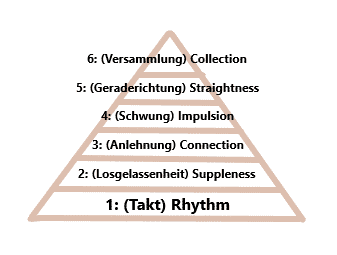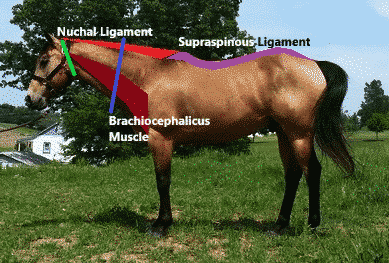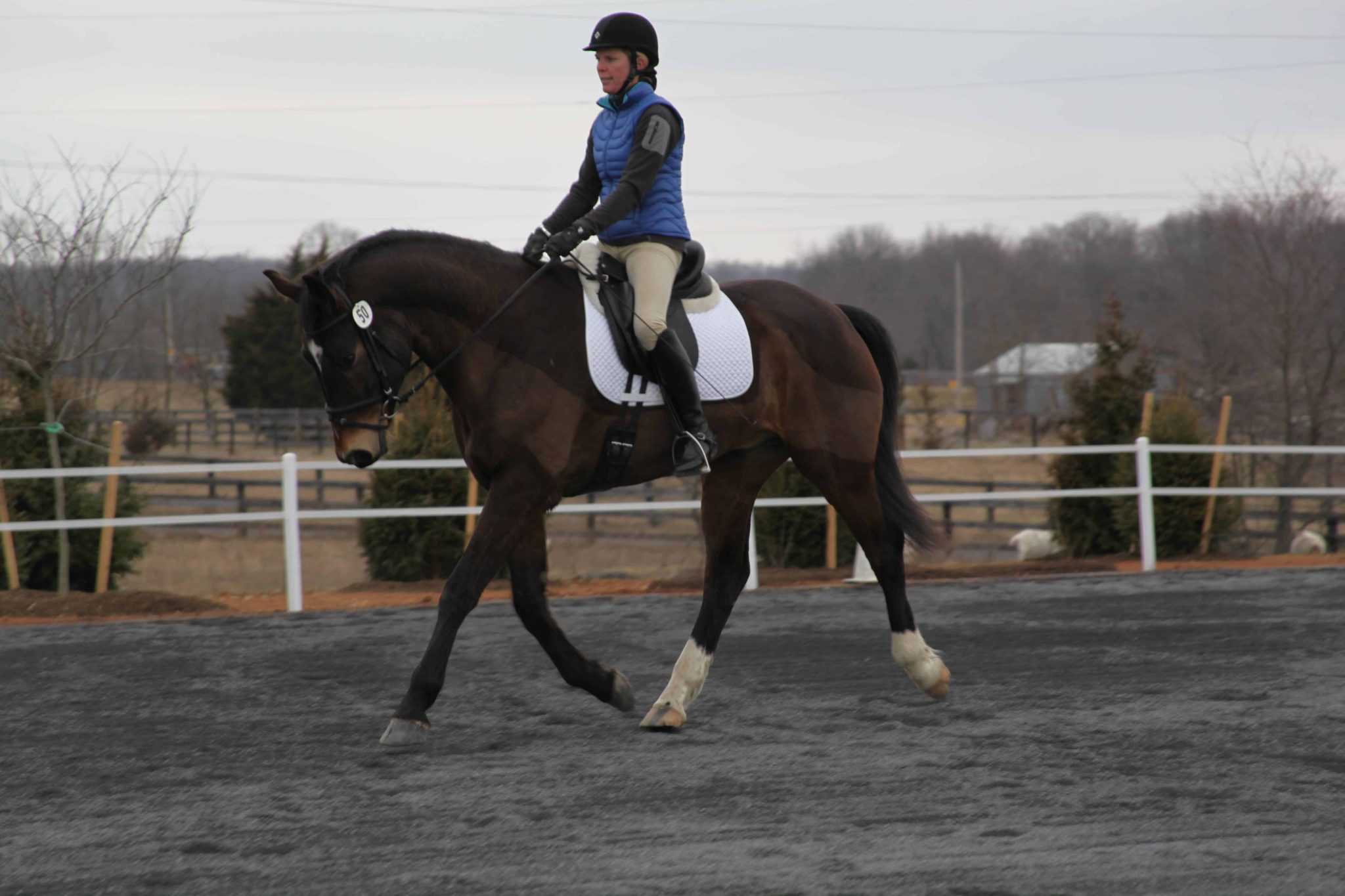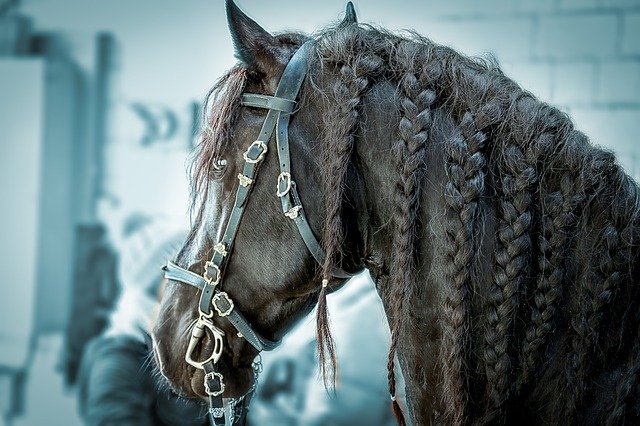
We talk a lot of about bend when training horses.
“You have to get him supple.”
“He needs to be soft in the poll to achieve bend.”
“You need to establish consistent bend through his body.”
But there is an equally important component that we too often forget to mention; straightness. You need both bend and straightness to achieve true collection. I know, it sounds like an oxymoron. How can you have both bend and straightness at the same time?
The Line Between Bend and Straightness
There is a fine line between too straightness, bend, and over-bent. Of course, different situations require different degrees of bend. If you look at the figures below you will see a very elementary example of this concept.

Figure A represents true straightness. Figure B represents bend. Yes, that is the amount of bend that many maneuvers require. It does not look like much but a little bit goes a long way. This is the amount of bend that should be exhibited in circles, spirals, corners (90* turns), leg yields, spins (turn on the hindquarters), and serpentines (such as in pole bending), just to name a few uses. There are, of course, many more, but I think you get the point. Figure C depicts more extreme bend. In many cases, this would be too much. However, there are some cases where this would be appropriate. A few of these cases include shoulder-in/shoulder-out, counter arcing, and extremely tight turns in events like barrel racing (depending on your horse’s running style). Figure D depicts extreme bend. This is the type of bend that does more harm than good.
Why Too Much Bend is Detrimental
Breaking in the rib cage to this extent (Figure D) creates a disconnect between the front and back ends of the horse. While it is true that we talk about wanting to have “independent control” of all body parts, those body parts still need to stay connected on a fundamental level. Breaking at the rib cage to this extreme disengages the horse’s top line which, in turn, disengages the horse’s hind end.
Remember, the hindquarters is your horse’s engine. Disengage the engine and you’re drifting in neutral. If you are running at high speeds — such as in barrel racing — this will cause your horse to spin out on the back side of the barrel. This can lead to the horse bowing out wide to keep his balance, slipping on his hind end if the ground is bad enough, or swinging his hip out to try and get back in position and compensate. Any of these mistakes will kill a run in an instant, especially if they become a habit. These things can also happen in any other event that requires tight turns and fast acceleration such as pole bending, reining, and reined cow horse just to name a few.
Related: Lateral Flexion of the Poll
Why Too Much Straightness is Detrimental
Too much straightness tends to lead to too much stiffness. It is important to maintain a certain level of suppleness without over flexing. Straightness leads to balance and balance leads to collection. Collection, of course leads to improved performance, increased power, and greater athleticism.
A perfectly straight body line (Figure A) is required for maneuvers like a square halt and a straight backup. A fancy term for maintaining straightness is “staying between the rider’s aids.” So, if you ever hear that vague and endlessly confounding expression again, you will know that they are likely referring to the horse staying straight underneath the rider and maintaining speed and direction. However, all good things must be had in moderation. Therefore, it is going to be a constant balancing act between straightness and bend. A well-trained horse has both.










Sorry another poor article…